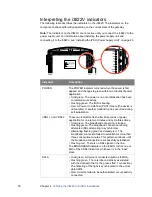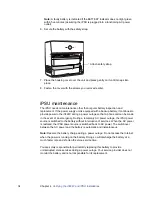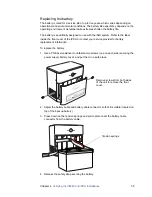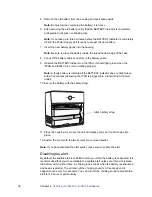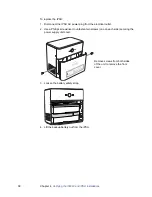
44
Chapter 5
Installing the i38HG (Inside Unit)
Connecting through wireless
Your i38HG has an integrated wireless access point (AP) that enables you to connect
your wireless-enabled computers to your home network. By default, the i38HG is
shipped with WPA-PSK and WPA2-PSK
enabled and a preconfigured network name.
You can connect multiple i38HGs in your home. When multiple APs are detected, they
are automatically synchronized across all managed access points to create a single
wireless network for easier device connectivity. The default service set identifier
(SSID) and wireless key is based on the last three digits of the serial number on the
first access point that was connected. If you have multiple APs installed, refer to the
label on your first installed AP only. All subsequent access points are automatically
synchronized with the default SSID or with any custom SSID you define subsequent
to initial installation.
Most laptop computers are equipped with an internal 802.11b/g card. If your computer
is not equipped with an internal card, you can install an external wireless adapter for
wireless networking. The Pace wireless adapter provides a Pace Setup Wizard that
automatically configures it to communicate with the i38HG during setup. If you are
using a non-Pace wireless adapter, you must manually configure it to communicate
with the i38HG. See “Configuring non-Pace wireless adapters” on page 44 to
configure a wireless network adapter.
Configuring non-Pace wireless adapters
If you are using a non-Pace wireless adapter, you must manually configure it to
communicate with the i38HG. This section provides instructions to configure your
adapter with WPA. You can use WEP if your wireless adapter does not support WPA;
however, this decreases the level of security provided for wireless traffic.
To install the non-Pace wireless adapter:
1. Install and configure your wireless adapter according to the manufacturer’s
instructions.
2. Use the network adapter configuration software or Windows network connection
wizard to set the network name (SSID) and encryption key (WPA).
3. Locate the SSID identified on the bottom label of your i38HG and enter it as the
network name.

